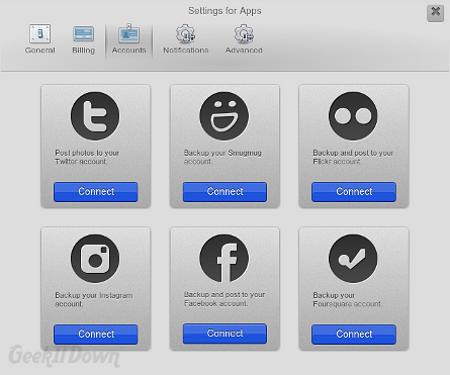Picturelife
By now most users are in some way familiar with cloud storage and computing, in fact if you’re one of our regular readers, then very familiar. Something we continue to encourage is data backup. Cloud storage is so convenient and affordable that every user should be utilizing the technology. Today we’re looking at another online storage choice, Picturelife.
Features
Beyond storage, Picturelife acts as a browsing place to view and find pictures in an easy manner. Users can display multiple pictures on screen, view them as a single image and browse through them by album.
Picturelife’s sorting capabilities make for a decent automatic organization feature. Through date and timestamps attached to photos, Picturelife can chronologically organize the images. Along with timestamps, Picturelife makes use of GPS marked photos, if it exists, to help display your pictures across a map.
A demand from cloud storage services is syncing capabilities and Picturelife has them. Through both a computer application and mobile app, Picturelife ensures all pictures are synced across devices to your Picturelife account. Picturelife has sharing options as well which enable users to view and even exchange photos through their accounts.
Extras
Although many users don’t think about security, we do. Picturelife is storing personal, private and precious mementos when users entrust their pictures to them so it’s important to know that they will be safeguarded. Picturelife uses SSL encryption on every plan size to ensure data is kept safe. Additionally, all pictures are set to private by default which is a positive feature that some other companies don’t seem to understand.
Twitter users can benefit from integration with Picturelife and use it as their image service. The idea is again to keep all your images tied to a single unified service. Other third party uses include Foursquare, Instagram, Facebook, Smugmug and Flickr. For those with AWS storage, Picturelife has options for you as well.

Plans
Picturelife offers three plans ranging from 5GB up to 300GB. The 5GB plan is free which makes taking Picturelife for a test drive very attractive. The other plans are $7/month for 100GB or $15/month for 300GB and both have a 2 month discount if purchased as a yearly plan.
Users can also earn an extra 450MB of storage through various tasks. For example, syncing 1,000 photos will earn an account an extra 100MB of space.
Final Thoughts
Picturelife is only slightly different than other cloud storage services, but their focus on pictures gives them a leg up on presentation. The platform is built around images and thus sharing and other features are secondary concerns which is a pleasant surprise in the age of “share everything”.
There are some limitations. For instance, Linux and Windows users are simply out of luck since the Picturelife application requires Mac. That in and of itself isn’t enough to dimiss the service, but the lack of an Android app might be. The mobile offering from Picturelife is iOS only at the time of this article which is a major disappointment.
Nevertheless, Picturelife is still young and has room to grow. We’d definitely like to see an Android app in the very near future, as well as additional ways to earn free space as they become a bigger player in the cloud storage market.
If the price point stays reasonable, Picturelife could be the storage option users choose to pay for in order to keep their most important items (photos) safe while continuing to use other free services for less critical items.
Visit Picturelife
If you enjoyed or found this article useful, please show us some support by liking us on Facebook or by sharing us on your favorite social website. Thanks!


